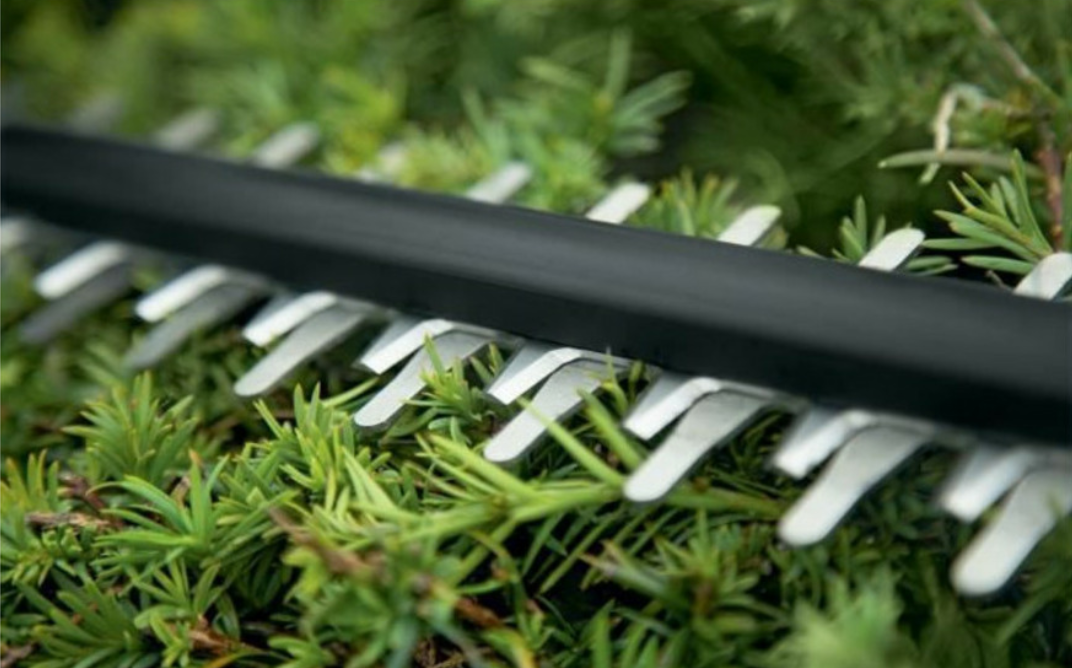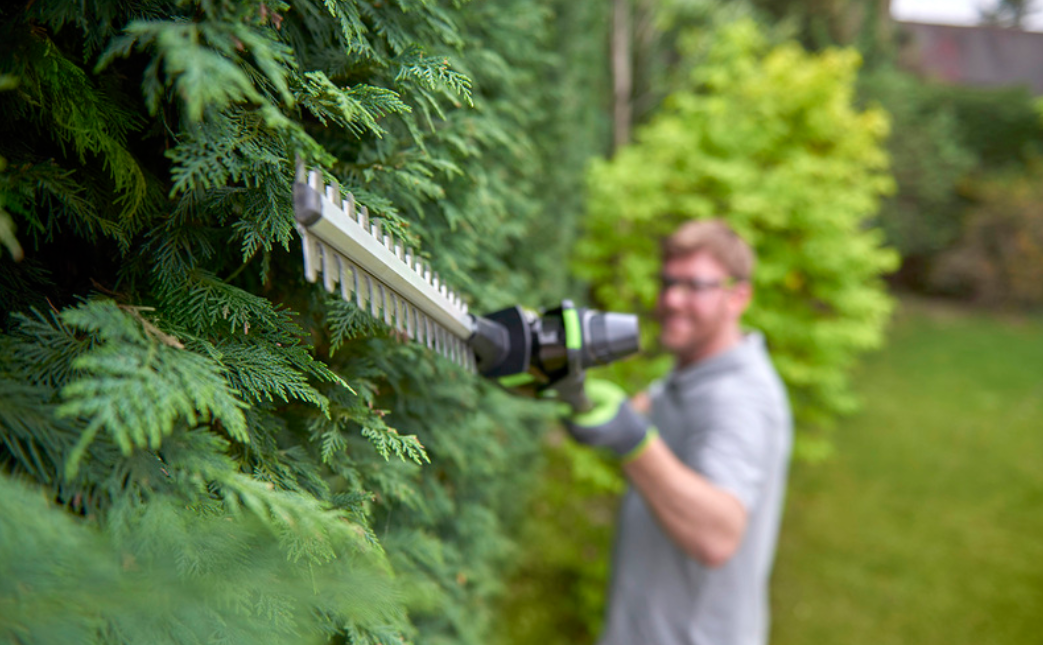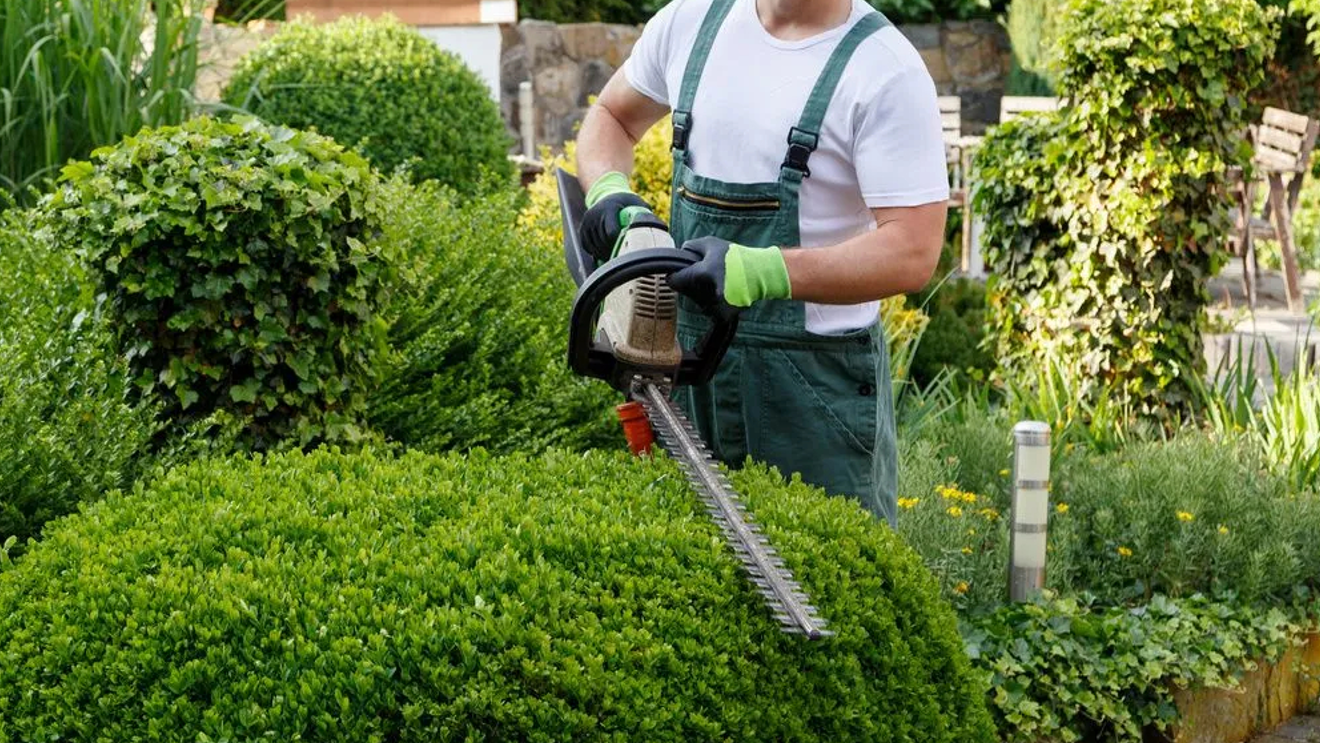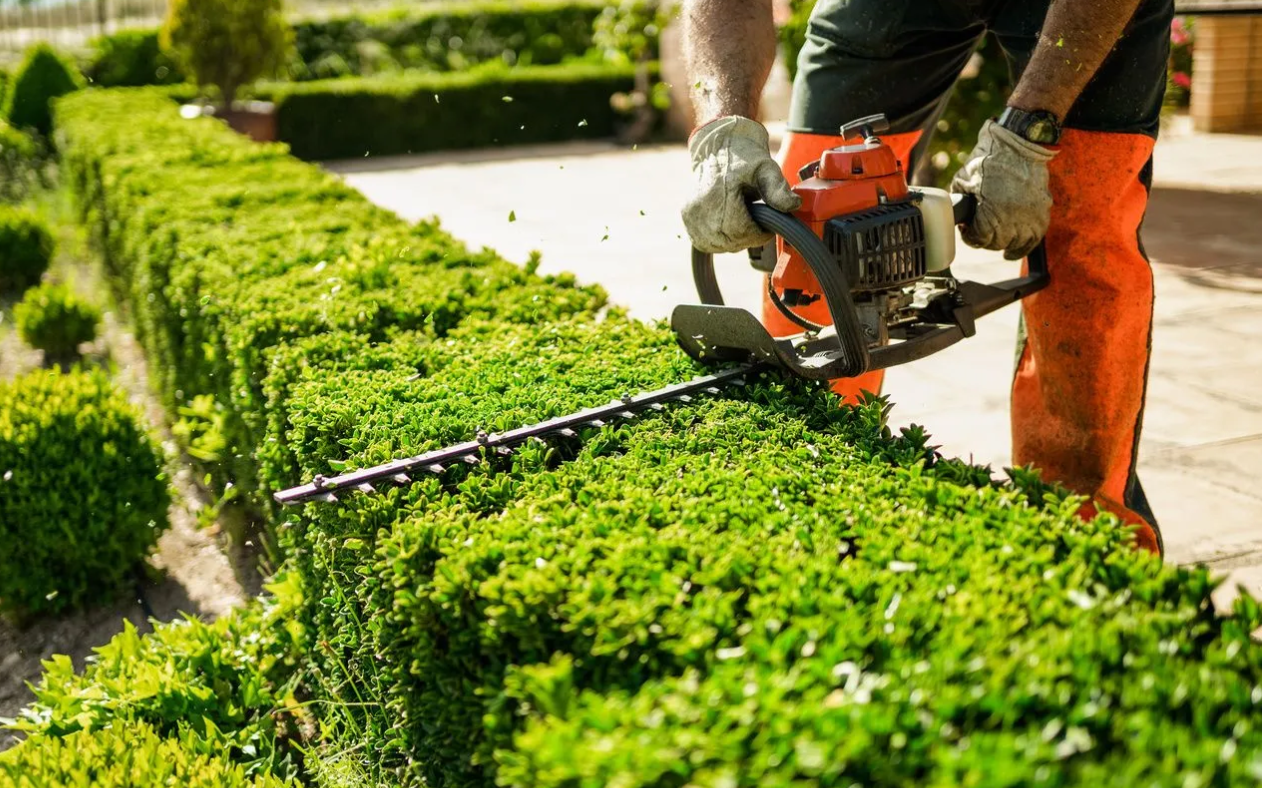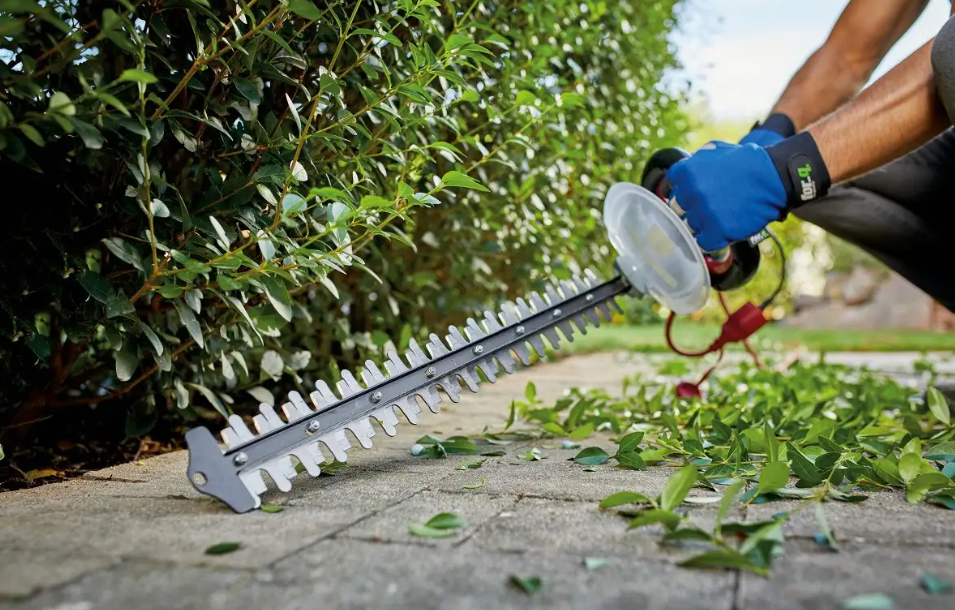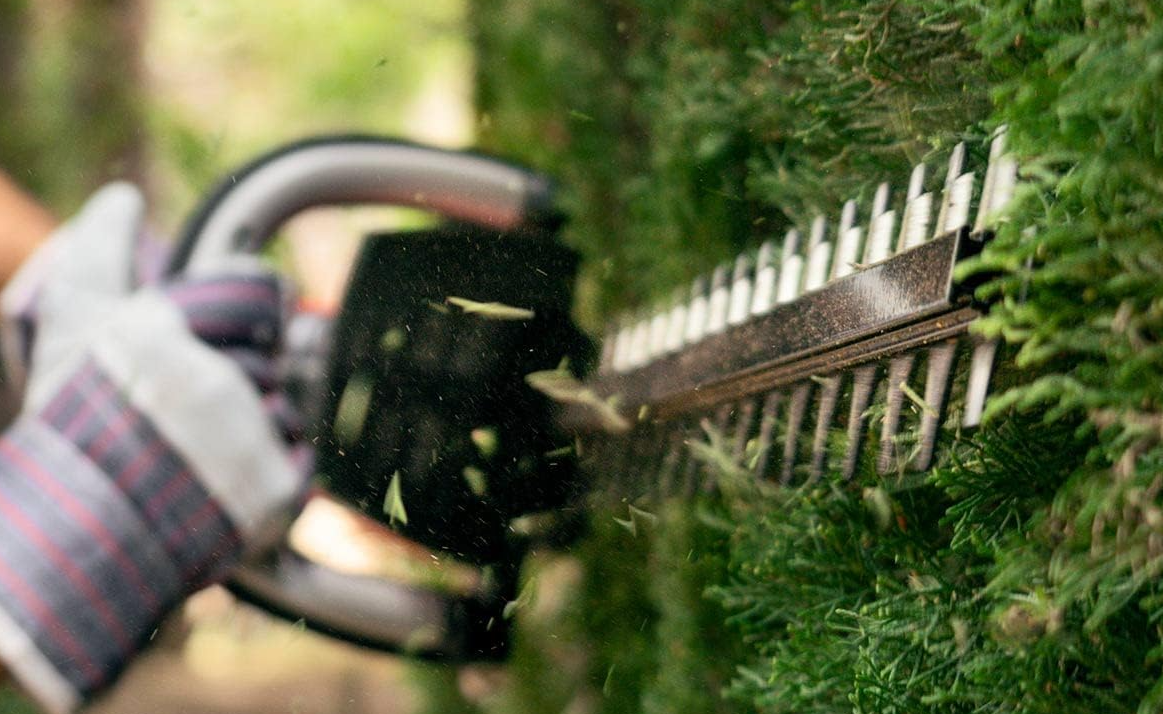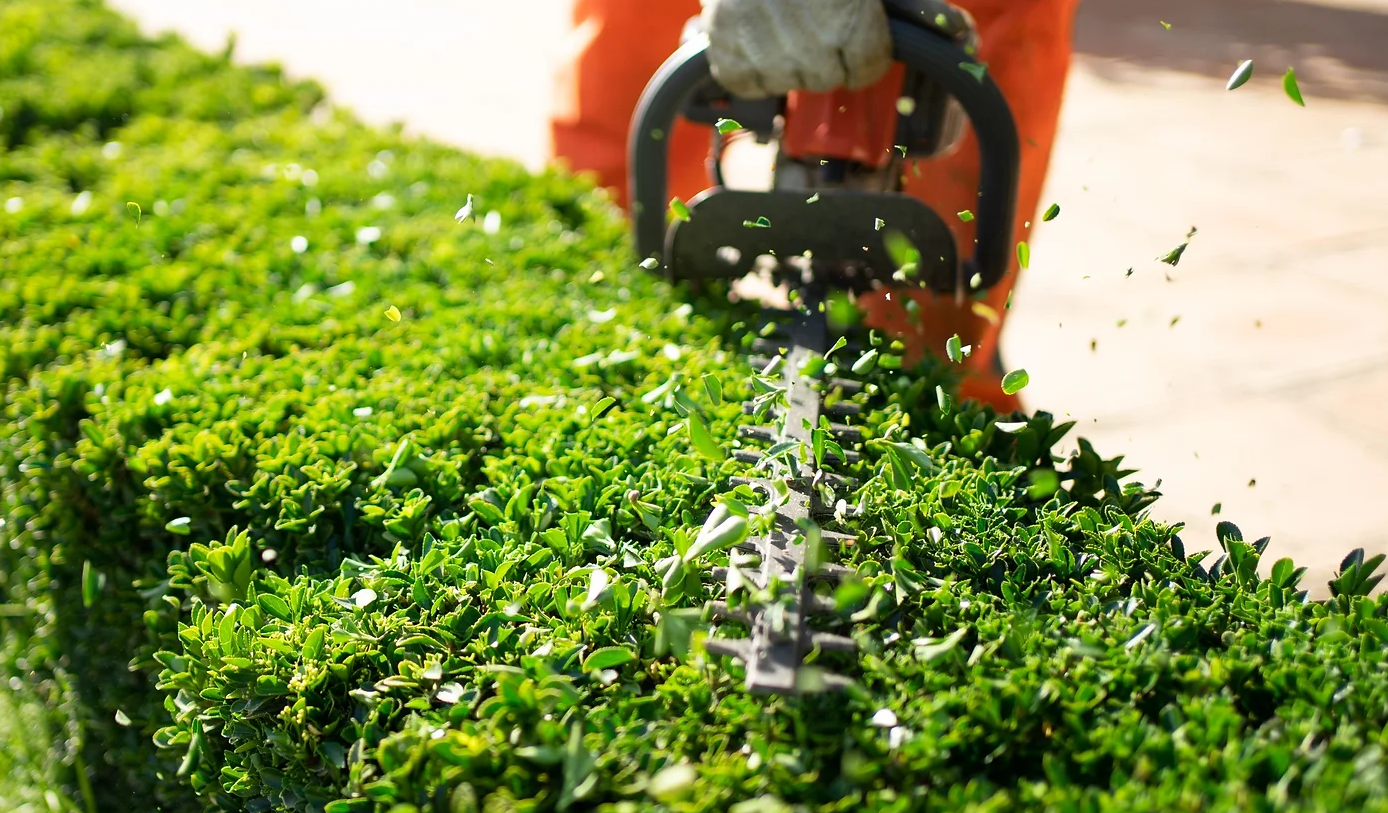Maintaining well-trimmed hedges is essential for enhancing the beauty of our outdoor spaces. However, manual hedge trimming can be time-consuming and physically demanding. Thankfully, hedge trimmers provide an efficient and convenient solution for hedge maintenance. In this article, we will explore the benefits and features of hedge trimmers, highlighting their effectiveness in achieving beautifully groomed hedges.
What is Hedge trimmer?
Hedge trimmers are specialized gardening tools designed for trimming, shaping, and maintaining hedges, shrubs, bushes, and other plants with woody stems. They are essentially a type of scissor-like cutting tool specifically designed for hedge-related tasks. Hedge trimmers come in various types, including manual and powered versions, to cater to different trimming needs and preferences.
Manual hedge trimmers, also known as hedge shears or hedge clippers, are operated by hand. They consist of two long blades with handles attached at one end. The user manually squeezes the handles together to close the blades and cut through the hedge branches. Manual hedge trimmers are suitable for small-scale trimming tasks and provide more control and precision in shaping hedges.
Powered hedge trimmers, on the other hand, are equipped with electric, battery, or gas-powered motors to assist with cutting and trimming tasks. Electric hedge trimmers are powered by electricity and require a power outlet or an extension cord for operation. They are generally lightweight, easy to handle, and emit less noise compared to gas-powered trimmers. Battery-powered hedge trimmers, as the name suggests, use rechargeable batteries for power. They offer greater mobility and freedom of movement since they are not tethered to a power source. Gas-powered hedge trimmers are the most powerful and suitable for heavy-duty trimming tasks. They are typically heavier and louder than electric or battery-powered models and require fuel (gasoline) for operation.
Hedge trimmers typically have long, straight or curved blades with sharp teeth on one side. The teeth are designed to grip and cut through branches efficiently. The length of the blades varies depending on the model, with longer blades being suitable for trimming larger hedges. Some hedge trimmers also feature adjustable blade angles, allowing users to cut at different angles for more precise shaping.
Overall, hedge trimmers are essential tools for maintaining neatly trimmed hedges and shaping the greenery in gardens and landscapes. They offer efficiency, convenience, and versatility in achieving desired hedge shapes and sizes.
Types of Hedge Trimmers
There are several types of hedge trimmers available in the market, each with its own features and advantages. The choice of hedge trimmer depends on factors such as the size of the hedge, the type of vegetation being trimmed, personal preferences, and the availability of power sources. Here are some common types of hedge trimmers:
Electric Hedge Trimmers:
Features: Electric hedge trimmers are powered by electricity and require a power outlet or an extension cord for operation. They are lightweight, easy to handle, and emit less noise compared to gas-powered trimmers. Electric trimmers are suitable for small to medium-sized hedges and are ideal for residential use. They offer consistent power and are relatively low-maintenance compared to gas-powered trimmers.
Benefits: Electric trimmers are generally more affordable than other types. They provide consistent power, require minimal maintenance, and emit less noise compared to gas-powered trimmers. They are also environmentally friendly as they produce no emissions.
Battery-Powered Hedge Trimmers:
Features: Battery-powered hedge trimmers are cordless and operate on rechargeable batteries. They offer greater mobility and freedom of movement as they are not tethered to a power source. Battery-powered trimmers are suitable for small to medium-sized hedges and are convenient for properties without easy access to power outlets. They provide decent cutting power and are quieter than gas-powered trimmers. However, the runtime of battery-powered trimmers is limited by the battery life.
Benefits: Battery-powered trimmers provide excellent maneuverability and are suitable for small to medium-sized hedges. They are quieter than gas-powered trimmers and do not emit harmful fumes. They are also easy to start and require minimal maintenance.
Gas-Powered Hedge Trimmers:
Features: Gas-powered hedge trimmers are the most powerful and suitable for heavy-duty trimming tasks. They are typically heavier and louder than electric or battery-powered models. Gas trimmers offer excellent cutting performance and can handle large hedges and thick branches. They are ideal for professional landscapers and individuals with extensive trimming needs. However, gas-powered trimmers require fuel (gasoline) for operation and regular maintenance, including fuel mixing and engine maintenance.
Benefits: Gas trimmers offer exceptional cutting performance and are suitable for heavy-duty trimming of large hedges and thick branches. They provide the freedom to move without being limited by cords or batteries. Gas-powered trimmers are commonly used by professional landscapers due to their power and durability.
Pole Hedge Trimmers:
Features: Pole hedge trimmers are designed with an extended shaft or pole that allows users to reach tall hedges or trim the tops of hedges without using a ladder. They are available in electric, battery-powered, and gas-powered versions. Pole trimmers are versatile and can be adjusted to different angles for trimming at various heights and angles. They are suitable for trimming tall hedges or hard-to-reach areas.
Benefits: Pole trimmers provide convenience and safety when trimming tall hedges or hard-to-reach areas. They eliminate the need for a ladder, reducing the risk of accidents. They allow for precise trimming at various heights and angles, making them ideal for pruning and shaping tall hedges.
Multi-Tool Hedge Trimmers:
Features: Multi-tool hedge trimmers are part of a versatile tool system that allows users to switch between different gardening tools using a single power source. These systems typically include attachments for hedge trimming, pruning, grass trimming, and other gardening tasks. Multi-tool hedge trimmers are convenient for users who require multiple tools for their gardening needs.
Benefits: Multi-tool systems offer flexibility and cost-effectiveness. They save storage space and reduce the need to purchase and maintain multiple individual tools. Users can easily switch between different attachments to perform various gardening tasks.
When selecting a hedge trimmer, it is important to consider the size and type of hedges, the available power sources, the desired level of mobility, and personal preferences for handling and maintenance. It is also advisable to read product reviews and consult with professionals or knowledgeable experts to choose the most suitable hedge trimmer for specific trimming requirements.
Advantages of Hedge Trimmers
Hedge trimmers offer several advantages for maintaining and shaping hedges and shrubs. Here are some key advantages of using hedge trimmers:
Efficient Trimming:
Hedge trimmers are specifically designed for trimming hedges and shrubs, making the task much faster and more efficient compared to using manual tools like shears. They have sharp blades that can cut through branches and foliage with ease, allowing for precise and clean cuts.
Time-Saving:
Hedge trimmers significantly reduce the time and effort required for trimming tasks. They enable you to cover larger areas and complete the job in less time compared to manual trimming methods. This is especially beneficial for those with extensive or multiple hedges to maintain.
Versatility:
Hedge trimmers come in various types and models, offering different features and capabilities. This allows you to choose a trimmer that suits your specific needs, whether it's for trimming small hedges in a residential garden or tackling larger, more demanding landscaping projects.
Consistent Results:
Hedge trimmers provide consistent cutting results, ensuring that your hedges are trimmed evenly and maintain a neat appearance. The blades are designed to create uniform cuts, giving your hedges a professional and well-maintained look.
Precision and Control:
Hedge trimmers offer precise cutting control, allowing you to shape and sculpt your hedges according to your desired design. With the ability to trim branches at different angles and heights, you can create clean lines, curves, and intricate shapes with ease.
Safety Features:
Modern hedge trimmers often come with safety features such as blade guards and safety switches. These features help prevent accidental injuries and provide added protection while operating the trimmer. However, it's still important to follow safety guidelines and wear appropriate protective gear when using hedge trimmers.
Adaptability to Different Hedges:
Hedge trimmers are suitable for trimming various types of hedges and shrubs, including different species and sizes. They can handle both thin and thick branches, allowing you to maintain different types of foliage and achieve desired shapes and sizes for your hedges.
Overall, hedge trimmers offer efficiency, precision, and convenience in maintaining and shaping hedges. They save time and effort, provide consistent results, and allow for creative and well-maintained landscapes. However, it's important to select the appropriate type and model of hedge trimmer based on your specific trimming needs and preferences.
Proper Usage for safe and effective hedge trimming
Proper usage of hedge trimmers is essential to ensure the optimal performance, longevity, and safe operation. Here are some guidelines to follow:
Assess the Area: Before you begin trimming, survey the area around the hedge for any potential hazards such as electrical wires, obstacles, or uneven ground. Ensure there is ample space to move around and that the working area is clear of debris.
Wear Protective Gear: Always wear appropriate protective gear, including safety goggles or glasses, ear protection, gloves, and sturdy footwear. Protective gear helps safeguard against flying debris, loud noise, and potential injuries.
Check the Trimmer: Inspect the hedge trimmer before use to ensure it is in good working condition. Check for any damaged or loose parts, and make sure the blades are sharp and properly aligned. If you notice any issues, have the trimmer repaired or serviced before proceeding.
Plan Your Trimming: Have a clear plan in mind for how you want to shape and trim the hedge. Start by identifying any specific areas that need attention, such as overgrown branches or uneven sections. Visualize the desired outcome and work systematically to achieve it.
Start from the Bottom: Begin trimming from the bottom of the hedge and work your way up. This allows you to maintain a consistent shape and prevents the trimmings from falling onto freshly trimmed areas.
Use Smooth and Controlled Motions: Hold the trimmer with a firm grip and use smooth, sweeping motions to trim the hedge. Avoid jerky or erratic movements that can result in uneven cuts. Take your time and be patient to achieve clean and precise results.
Maintain Balance: Maintain a balanced posture while trimming. Distribute your weight evenly and avoid overstretching or leaning too far in any direction. This helps maintain stability and reduces the risk of accidents or strain on your body.
Be Mindful of Power Cords: If you're using an electric hedge trimmer, be cautious of the power cord. Keep it away from the cutting path to avoid accidental cuts or damage to the cord. Use an appropriate extension cord if needed, and ensure it is rated for outdoor use.
Watch for Falling Debris: Pay attention to falling debris while trimming. Trim branches from the top down to prevent loose clippings from falling onto you or into the hedge. Be aware of your surroundings and avoid trimming near people, pets, or fragile objects.
Take Breaks: Hedge trimming can be physically demanding, so take regular breaks to rest and hydrate. Overexertion can lead to fatigue and decreased focus, increasing the risk of accidents.
Clean Up After Trimming: Once you have finished trimming, clean up the trimmed branches and debris from the area. Dispose of them properly or use them for composting if suitable.
Remember, if you're unsure about any aspect of hedge trimming or if the hedge requires extensive work, it's advisable to consult a professional landscaper or arborist for assistance. They have the expertise and equipment to handle complex trimming tasks safely and effectively.
Routine maintenance and care for hedge trimmers
Routine maintenance and care are crucial for keeping your hedge trimmers in good working condition. Here are some guidelines to follow:
Cleaning:
After each use, remove any debris, clippings, or sap from the hedge trimmer blades. Use a brush or cloth to wipe them clean. For stubborn residue, you can use a mild detergent or specialized blade cleaner. Make sure to disconnect the power source (unplug or remove the battery) before cleaning.
Blade Maintenance:
Regularly inspect the blades for any signs of damage, dullness, or nicks. If the blades are dull, they should be sharpened or replaced according to the manufacturer's recommendations. Follow the manufacturer's instructions for blade maintenance and sharpening. Lubricate the blades with a light machine oil to prevent rust and ensure smooth operation.
Check for Loose Parts:
Periodically inspect the hedge trimmer for any loose screws, bolts, or other parts. Tighten them as necessary to ensure proper functioning and safety. Pay attention to the handles, guard, and any adjustable components.
Battery Maintenance (if applicable):
If you have a battery-powered hedge trimmer, follow the manufacturer's guidelines for battery maintenance. Charge the battery according to the recommended charging time and avoid overcharging. Store the battery in a cool, dry place when not in use. Replace the battery if it no longer holds a charge or shows signs of damage.
Fuel System (if applicable):
If you have a gas-powered hedge trimmer, follow the manufacturer's instructions for fueling and maintaining the engine. Use the recommended fuel mixture and avoid using stale or contaminated fuel. Regularly check the fuel lines, air filter, and spark plug for any signs of damage or clogging. Clean or replace these components as needed.
Storage:
When not in use, store the hedge trimmer in a clean and dry area, away from moisture and extreme temperatures. Hang it on a wall or store it in a secure place to prevent accidental damage or access by children. If the trimmer has a blade cover or sheath, use it to protect the blades during storage.
Professional Servicing:
If you encounter any significant issues with your hedge trimmer or if it requires major repairs, it's best to consult a professional or authorized service center. They have the expertise and tools to handle complex repairs and ensure the trimmer's safety and performance.
By following these routine maintenance and care guidelines, you can extend the lifespan of your hedge trimmers and ensure their optimal performance when you need them for your trimming tasks.
Environmental Considerations
Electric and battery-powered hedge trimmers offer several eco-friendly advantages compared to their gas-powered counterparts. Here are some key eco-friendly aspects of electric and battery-powered hedge trimmers:
Reduced Emissions:
Electric and battery-powered hedge trimmers produce zero emissions at the point of use. Unlike gas-powered trimmers that emit pollutants such as carbon monoxide, nitrogen oxides, and volatile organic compounds (VOCs), electric and battery-powered trimmers operate without burning fossil fuels, resulting in cleaner air quality.
Noise Reduction:
Electric and battery-powered hedge trimmers are generally quieter than gas-powered models. The absence of a combustion engine significantly reduces noise pollution, making them more environmentally friendly and less disruptive to both users and nearby communities.
Energy Efficiency:
Electric and battery-powered trimmers are typically more energy-efficient than gas-powered ones. They convert electrical energy or stored battery power directly into cutting action without energy loss from combustion processes. This efficiency translates into less energy consumption and lower overall environmental impact.
Renewable Energy Compatibility:
Electric hedge trimmers can be powered by electricity from renewable energy sources such as solar or wind power. By utilizing clean and sustainable energy, these trimmers further reduce their carbon footprint and contribute to a greener energy transition.
Reduced Fuel Dependency:
Electric and battery-powered hedge trimmers eliminate the need for gasoline or other fossil fuels. This reduces dependence on non-renewable resources, decreases the demand for oil extraction, and helps mitigate the environmental risks associated with fuel production, transportation, and storage.
Lower Maintenance Requirements:
Electric and battery-powered trimmers generally have simpler maintenance needs compared to gas-powered models. They don't require fuel mixing, oil changes, or spark plug replacements, reducing the potential for oil and fuel spills or improper disposal of hazardous waste.
Extended Battery Life:
Battery-powered hedge trimmers have made significant advancements in recent years, with improved battery technology that provides longer runtimes and faster recharge times. This reduces the need for frequent battery replacements and extends the overall lifespan of the batteries, reducing waste.
Versatility:
Electric and battery-powered trimmers can be used in noise-sensitive areas, such as residential neighborhoods or parks, without causing disturbances. Their eco-friendly features make them suitable for environmentally conscious users and organizations that prioritize sustainability and green practices.
It's important to note that while electric and battery-powered hedge trimmers offer eco-friendly advantages, their environmental impact can still be influenced by the source of electricity used for charging. Opting for renewable energy sources to power these trimmers further enhances their eco-friendly attributes.
Overall, electric and battery-powered hedge trimmers provide a cleaner, quieter, and more sustainable alternative to gas-powered models, making them a greener choice for maintaining hedges and shrubs.
Conclusion
Hedge trimmers provide an efficient and convenient solution for maintaining beautiful and well-groomed hedges. Their various types cater to different needs, offering versatility and adaptability. By using hedge trimmers, users can save time and effort while achieving precise and aesthetically pleasing results. Additionally, the safety features and ergonomic design of hedge trimmers ensure comfortable and secure operation. Considering the environmental benefits of electric and battery-powered models, hedge trimmers are not only efficient but also eco-friendly. So, why struggle with manual hedge trimming when you can rely on the efficiency and convenience of hedge trimmers to transform your hedges into stunning outdoor features? Choose the right hedge trimmer for your needs and enjoy the benefits of beautifully maintained hedges year-round.
Post time: Oct-18-2023


